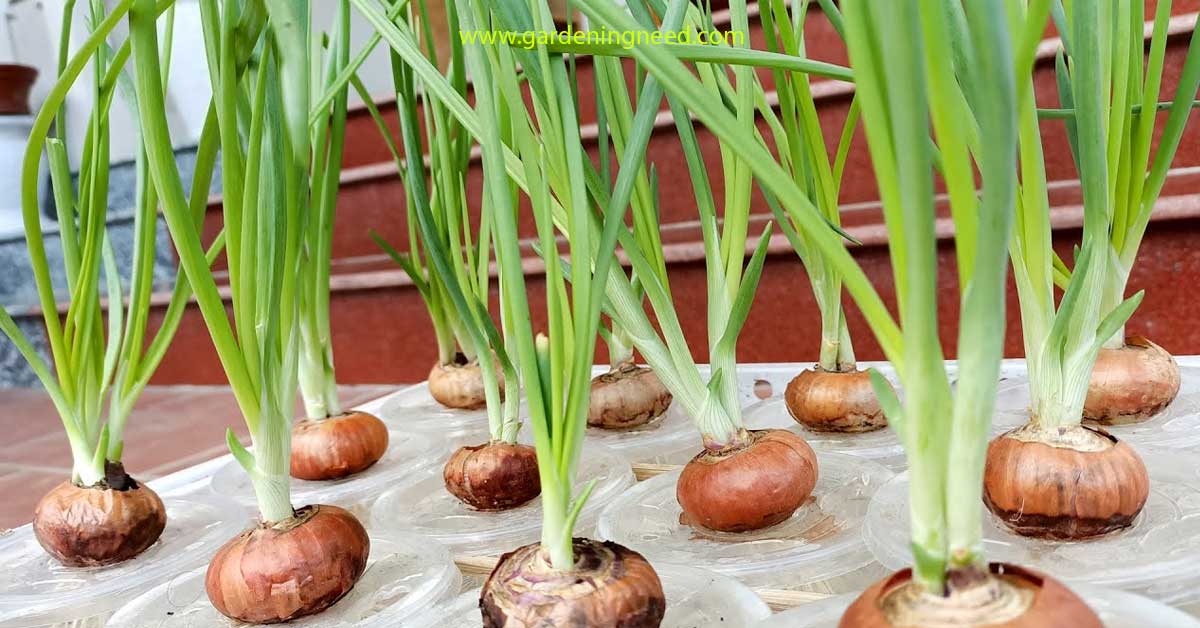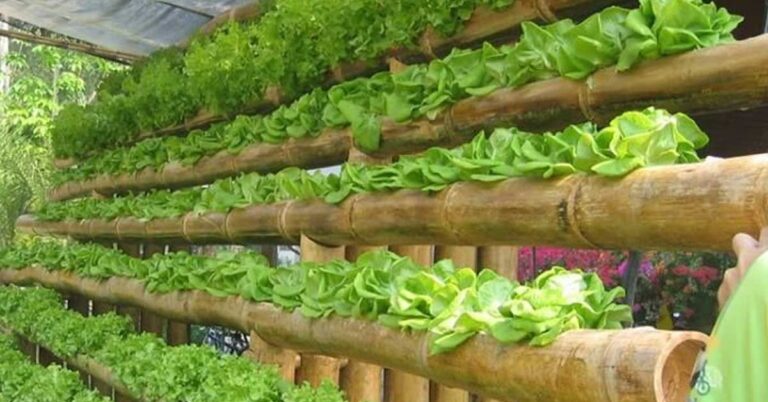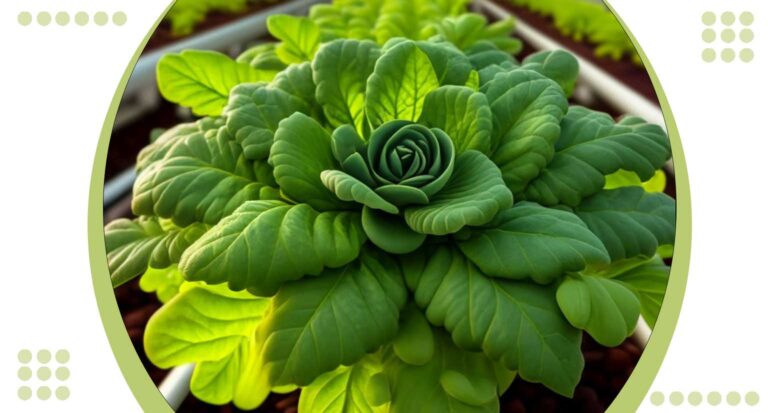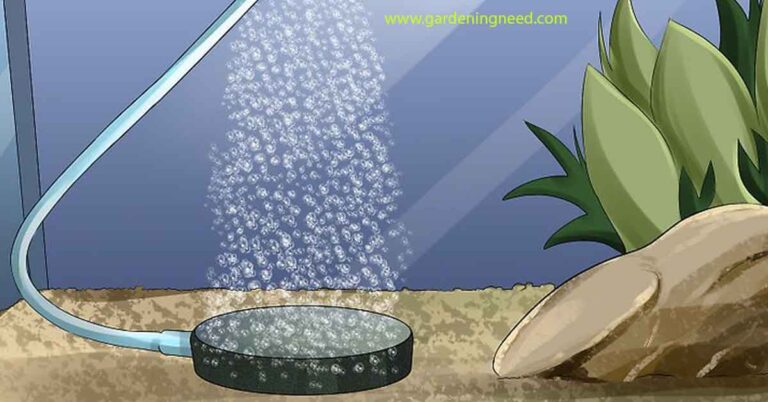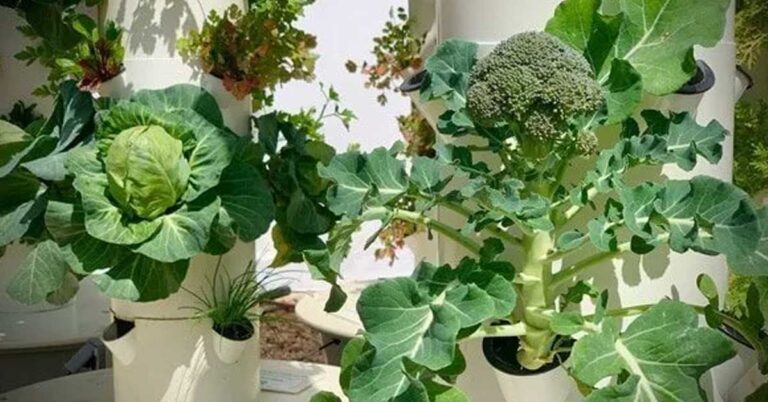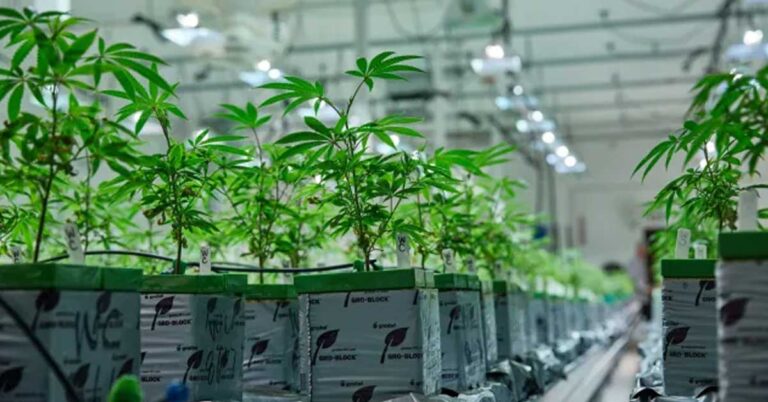Hydroponic Onions
Hydroponic onions are a type of onion grown without soil, using a nutrient-rich water solution instead. This method of growing onions is becoming increasingly popular due to its many benefits, such as increased yields, faster growth, and fewer pests and diseases. Hydroponic onions are also easier to harvest and require less space than traditional soil-grown onions. Additionally, hydroponic onions have a longer shelf life and are often more flavorful than soil-grown onions. With the right setup, anyone can grow delicious, nutritious hydroponic onions in their own home.
Advantages
Growing hydroponic onions is a great way to produce large, healthy onion bulbs with minimal effort. Hydroponic onions are grown without the use of soil, and instead rely on a nutrient-rich solution to provide the necessary nutrients for growth. This method of growing onions is becoming increasingly popular, as it is a more efficient and cost-effective way to produce a large crop of onions.
When growing hydroponic onions, there are several methods that can be used, such as the nutrient film technique (NFT), the Kratky method, and the deep water culture system (DWC). Each method has its own advantages and disadvantages, so it is important to research each one to determine which is best for your particular needs. Regardless of the method chosen, the most important part of growing hydroponic onions is to ensure that the pH levels, nutrient levels, and water levels are all within the optimal range for the type of onion being grown.
When selecting onion seeds for hydroponic growing, it is important to choose the right onion variety for the climate and growing zone. Short-day onions are best for areas with cooler climates, while long-day onions are better suited for warmer climates. Additionally, it is important to pay close attention to the growing medium used, as this will affect the growth rate and size of the onion bulbs. Common growing media for hydroponic onions include composite plugs, oasis cubes, and plain old soil.
Once the onion seeds have been planted, the next step is to set up the hydroponic system. This includes setting up the water reservoir, air pump, growing tray, and other components. It is important to ensure that the water level is kept at the optimal level, and that the nutrient water is changed regularly. Additionally, the hours of light and temperatures should be monitored to ensure optimal growth.
Once the onion plants have reached maturity, the next step is to harvest the crop. This is done by carefully removing the largest onion bulbs from the growing tray. If desired, half-grown onions can also be harvested, as they will continue to grow in size. Additionally, small bulb onions can be harvested and used as onion sets or green onions.
Overall, growing hydroponic onions is a great way to produce a large crop of onions with minimal effort. By paying close attention to the pH levels, nutrient levels, and water levels, and selecting the right onion variety for the climate, it is possible to produce a large crop of onions with the best results. With the right hydroponic setup and a little patience, anyone can grow a successful crop of hydroponic onions.
Supplies Needed for Hydroponic Onion Cultivation
Hydroponic onion cultivation is an efficient and effective way to grow onions without the use of soil. This method of growing onions requires a few supplies to get started, including onion seeds, a hydroponic setup, and a nutrient solution. Depending on the type of hydroponic system used, additional supplies may be needed.
For the best results, it is important to choose the right onion variety for the hydroponic system. Long-day onions are best for hydroponic cultivation, as they require fewer hours of light than short-day onions. Additionally, long-day onions are better suited for the high temperatures that hydroponic systems require.
Once the right onion variety is chosen, the next step is to assemble the hydroponic setup. Depending on the type of hydroponic system used, this may include a water reservoir, a growing medium, a nutrient film technique (NFT) system, or a deep water culture (DWC) system. It is important to make sure that the pH levels are correct and that the nutrient water is at the right level.
Once the hydroponic setup is complete, the next step is to add the onion seeds. This can be done by planting the seeds in a growing tray, or by using composite plugs, onion sets, or half-grown onions. The goal is to grow the largest onion bulbs possible, so it is important to pay close attention to the growth rate and the amount of light and nutrient water the onions receive.
The most important part of hydroponic onion cultivation is the nutrient solution. This solution should contain the right balance of mineral nutrient solutions, as well as a little nitrogen. Tap water can be used, but it is important to monitor the electrical conductivity (EC) of the water to ensure that the nutrient solution is at the right level.
Finally, it is important to pay close attention to the onion plants as they grow. This includes checking the water level, sprinkling water on the leaves, and monitoring the growth rate. Additionally, it is important to make sure that the plants are getting enough air, and to use an air pump and exhaust fans to ensure that the air is circulating properly.
By following these easy steps, anyone can successfully cultivate a crop of hydroponic onions. Hydroponic onion cultivation is a great way to grow onions without the use of soil, and with a little patience and close attention, anyone can enjoy a bountiful harvest of onions.
Nutrient Solutions
Nutrient Solutions for Hydroponic Onions are essential for growing this popular root crop in a hydroponics system. Depending on the type of hydroponic setup, different types of nutrient solutions may be used. For example, when using the Nutrient Film Technique (NFT) or the Kratky Method, a mineral nutrient solution is necessary to provide the onions with the necessary nutrients for optimal growth. When using the Deep Water Culture (DWC) system, a nutrient solution is also needed, but it is important to pay close attention to the pH levels and the electrical conductivity of the water.
When growing onions, it is important to choose the right onion variety for the best results. Short-day onions are best for hydroponic setups, as they require less hours of light and can tolerate high temperatures. Long-day onions are best for outdoor hydroponic systems, as they require more hours of light and prefer lower temperatures.
The most important part of the hydroponic setup is the nutrient solution. This solution should be made up of a combination of minerals, including nitrogen, phosphorus, potassium, calcium, and magnesium. Depending on the type of onion being grown, the nutrient solution should also contain a little nitrogen, as this will help promote the growth of the largest onion bulbs.
In addition to the nutrient solution, the hydroponic setup should also include a water reservoir, a growing medium, and a growing tray. For best results, the water level should be kept at a constant level, and the nutrient solution should be changed every few weeks. The growing medium should be a composite plug or oasis cubes, and the growing tray should be large enough to accommodate the onion plants.
When it comes to growing onions, the most important consideration is the hours of light. Onions require full sun for optimal growth, so it is important to provide the right amount of light for the onion plants. If the onion plants are not receiving enough light, they will not produce the largest onion bulbs.
Finally, it is important to pay close attention to the temperature of the hydroponic setup. Onions prefer temperatures between 65-80 degrees Fahrenheit, so it is important to make sure the temperature is within this range. If the temperature is too high, the growth rate of the onion plants will be slowed.
By following these easy steps, anyone can create a successful hydroponic setup for growing onions. With the right nutrient solution, the right onion variety, and the right amount of light, anyone can grow a successful crop of hydroponic onions.
Temperature Requirements
Growing onions hydroponically can be a rewarding experience for gardeners. Hydroponic onions require a few specific temperature requirements in order to grow successfully. Depending on the type of onion, temperatures should range from 55-75°F (13-24°C). For green onions, the ideal temperature is around 65°F (18°C). Onions are classified as either short-day or long-day onions, and the temperature requirements vary depending on the type.
Short-day onions require temperatures of 55-65°F (13-18°C) and long-day onions require temperatures of 65-75°F (18-24°C). The type of hydroponic system used will also affect the temperature requirements. For example, the nutrient film technique (NFT) system requires a higher temperature than the deep water culture (DWC) system. The water reservoir should also be kept at a temperature of 65-75°F (18-24°C).
When growing onions hydroponically, it is important to choose the right onion variety for the growing zone. Short-day onions are best suited for areas with mild winters, while long-day onions are best suited for areas with long, cold winters. The pH levels should also be monitored closely, as onions prefer a slightly acidic soil with a pH of 6.0-6.5.
When growing onions hydroponically, it is important to pay close attention to the nutrient water levels. Onions require little nitrogen, but plenty of other minerals and nutrients. A mineral nutrient solution should be used to ensure that the onions are getting the right amount of nutrients. The water level should also be monitored closely, as onions require a consistent water supply.
Finally, the growing medium should be monitored closely. Onions can be grown in a variety of growing media, such as composite plugs, oasis cubes, and plain old soil. The growing medium should be kept moist, but not overly wet. The best hydroponic systems for growing onions are the nutrient film technique (NFT) and the deep water culture (DWC) systems.
By following these temperature requirements and paying close attention to the nutrient water levels, pH levels, and growing medium, gardeners can successfully grow a crop of hydroponic onions. With the right onion variety, the right hydroponic system, and the right temperature requirements, gardeners can enjoy a delicious crop of onions in no time.
Pest and Disease Control
Pest and Disease Control for Hydroponic Onions is an important part of the hydroponic gardening process. Hydroponic onions are a type of root crop that can be grown in a variety of hydroponic systems, such as the nutrient film technique (NFT), the Kratky method, and the deep water culture (DWC) system. In order to get the best results from your hydroponic onions, it is important to pay close attention to the growing conditions, including the pH levels, hours of light, nutrient water, water level, and temperature.
When growing hydroponic onions, it is important to choose the right onion variety for your hydroponic setup. For example, if you are growing short-day onions, you will need to provide them with at least 12 hours of light per day. Long-day onions, on the other hand, require at least 14 hours of light per day. It is also important to pay attention to the temperature of the water reservoir and the growing media, as high temperatures can slow down the growth rate of the onions.
In addition to choosing the right onion variety, it is also important to provide the onions with the right nutrients. The most important part of this is to ensure that the nutrient water has the right electrical conductivity (EC) level. If the EC level is too low, the onions will not be able to absorb the necessary nutrients. If the EC level is too high, the onions may be burned by the nutrients.
When it comes to controlling pests and diseases, the most important part is to keep a close eye on the hydroponic onions. Inspect the onions regularly for signs of pests or diseases, and take action as soon as possible. If you spot any pests or diseases, it is important to take steps to eradicate them quickly. This may include using insecticides or fungicides, or simply removing the affected plants.
Finally, it is important to pay attention to the water level in the water reservoir and the nutrient solution level in the grow tray. Make sure that the water level is kept at the right level, and that the nutrient solution level is not too high or too low. This will help to ensure that the onions get the right amount of nutrients and water, and that the roots of the plant are able to absorb the nutrients.
Overall, Pest and Disease Control for Hydroponic Onions is an important part of the hydroponic gardening process. By paying close attention to the growing conditions, choosing the right onion variety, and keeping a close eye on the hydroponic onions, you can ensure that your crop of hydroponic onions will be healthy and productive.
Harvesting and Storing
Harvesting and storing hydroponic onions is a great way to enjoy fresh onions all year round. Hydroponic onions are grown in a nutrient-rich solution without the use of soil. This method of growing onions can be done with a variety of hydroponic systems, such as the nutrient film technique (NFT), the Kratky method, deep water culture (DWC) systems, and wick systems. When it comes to harvesting and storing hydroponic onions, the most important part is choosing the right onion variety and paying close attention to the growing cycle.
When it comes to choosing the right onion variety, it is important to consider the type of hydroponic system you are using. For example, short-day onions are best for hydroponic systems that use artificial lighting, while long-day onions are best for outdoor hydroponic systems. Additionally, it is important to consider the amount of light, the pH levels, and the nutrient solution level.
Once you have chosen the right onion variety, the next step is to set up your hydroponic system. This includes preparing the growing medium, setting up the water reservoir, and adding the nutrient water. Additionally, you will need to set up the grow tray, the air pump, and the exhaust fans.
Once your hydroponic system is set up, it is time to start growing your onions. This includes planting the onion seeds or onion sets, and ensuring that the water level and nutrient solution level are maintained. Additionally, you will need to pay close attention to the hours of light and the temperature of the growing zone.
When it comes to harvesting hydroponic onions, it is important to pay close attention to the growth rate of the onions. You should harvest the onions when they are immature and the bulbs are still small. Additionally, you should harvest the largest onion bulbs first and leave the smaller ones to continue growing.
Once you have harvested your hydroponic onions, it is important to store them properly. This includes keeping them in a cool, dry place and making sure that they are not exposed to direct sunlight. Additionally, you should check the onions regularly for signs of rot or mold.
Harvesting and storing hydroponic onions is a great way to enjoy fresh onions all year round. With the right onion variety, hydroponic setup, and proper storage, you can enjoy a crop of hydroponic onions for months to come.
Troubleshooting Common Problems
Troubleshooting Common Problems with Hydroponic Onions is an important part of the hydroponic gardening process. Onions are a root crop, and they require special attention when grown hydroponically. It is important to understand the best hydroponic systems and methods for growing onions, as well as the most important part of the process: choosing the right onion variety.
When growing onions hydroponically, the most important consideration is the type of hydroponic system you use. There are several different types of hydroponic systems, such as the nutrient film technique (NFT), deep water culture (DWC) system, wick system, and Kratky method. Each of these systems requires different setup and maintenance. It is important to choose the right system for your particular needs.
The next important step is to choose the right onion variety. There are two main types of onions: short-day onions and long-day onions. Short-day onions are best for growing in the summer months, while long-day onions are best for growing in the winter months. It is important to choose the right variety for your growing zone.
Once you have chosen the right system and onion variety, the next step is to set up the hydroponic system. This includes preparing the growing media, such as composite plugs, oasis cubes, or plain old soil, and setting up the water reservoir, air pump, and growing tray. It is also important to pay close attention to the pH levels, nutrient water, and hours of light for optimal growth.
Once the hydroponic system is set up, the next step is to plant the onion seeds or sets. Onion sets are half-grown onions that can be planted directly into the growing media. Onion seeds, on the other hand, require a little more work. The seeds should be soaked in water for a few hours before planting, and then sprinkled with water every few days until they sprout.
Once the onion seedlings have sprouted, it is important to pay close attention to the water level, nutrient solution level, and temperature. Too much or too little water, or too high or too low temperatures, can all affect the growth rate of the onions. It is also important to provide the onions with plenty of light, either from natural sunlight or artificial lighting.
Finally, it is important to pay close attention to the size of the onion bulbs. The largest onion bulbs will be the best for harvesting, while the smaller bulbs will be best for eating as green onions or leafy greens. The goal is to harvest the onions when they are still immature and small, so that they can be eaten as spring onions.
Troubleshooting Common Problems with Hydroponic Onions is an important part of the hydroponic gardening process. With the right hydroponic system, onion variety, and setup, you can easily grow a crop of hydroponic onions. However, it is important to pay close attention to the water level, nutrient solution level, and temperature to ensure optimal growth. Additionally, it is important to harvest the onions when they are still immature and small, so that they can be eaten as spring onions. With a little patience and the right setup, you can easily grow a crop of hydroponic onions.
Hydroponic onions are a great option for anyone looking to grow their own onions in a small space. Not only do they require less space than traditional onions, but they also require less water and fewer nutrients. They are also easier to harvest and can be grown indoors or outdoors. Hydroponic onions are a great choice for anyone looking to add a delicious, healthy onion to their diet.

